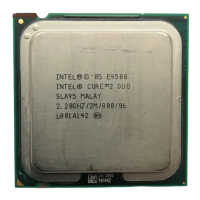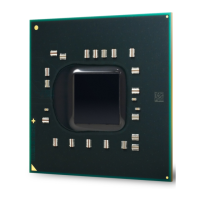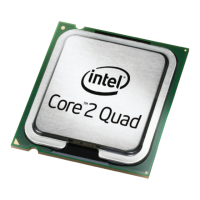Balanced Technology Extended (BTX) Thermal/Mechanical Design Information
46 Thermal and Mechanical Design Guidelines
5.2.3 Recommended BIOS/CPU/Memory Test Procedures
This test is to ensure proper operation of the product before and after environmental
stresses, with the thermal mechanical enabling components assembled. The test shall
be conducted on a fully operational motherboard that has not been exposed to any
battery of tests prior to the test being considered.
Testing setup should include the following components, properly assembled and/or
connected:
• Appropriate system motherboard
• Processor
• All enabling components, including socket and thermal solution parts
• Power supply
• Disk drive
• Video card
• DIMM
• Keyboard
• Monitor
The pass criterion is that the system under test shall successfully complete the
checking of BIOS, basic processor functions and memory, without any errors.
5.3 Material and Recycling Requirements
Material shall be resistant to fungal growth. Examples of non-resistant materials
include cellulose materials, animal and vegetable based adhesives, grease, oils, and
many hydrocarbons. Synthetic materials such as PVC formulations, certain
polyurethane compositions (such as, polyester and some polyethers), plastics that
contain organic fillers of laminating materials, paints, and varnishes also are
susceptible to fungal growth. If materials are not fungal growth resistant, then MIL-
STD-810E, Method 508.4 must be performed to determine material performance.
Material used shall not have deformation or degradation in a temperature life test.
Any plastic component exceeding 25 grams must be recyclable per the European Blue
Angel recycling standards.

